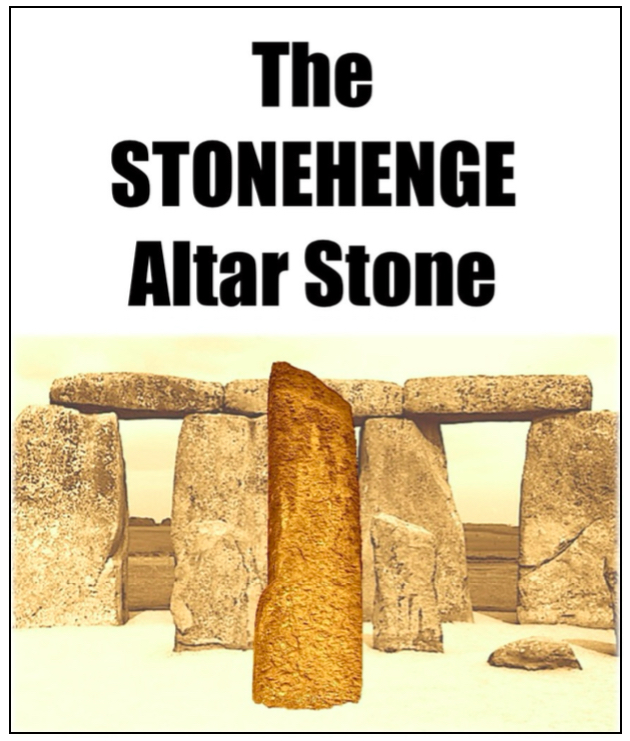
A Monograph from Andrew Collins
Click to download your free PDF copy now
With its enormous wooden poles erected in stages between circa 8820-6500 BCE, Stonehenge would appear to have formed part of a rich ceremonial landscape that included Vespasians Camp, Blick Mead, and perhaps even a proto form of Stonehenge centred around the construction of a mound platform and the presence towards the direction of the summer solstice sunrise of a whole series of periglacial stripes in the chalk land surface. As Mike Parker Pearson and his colleagues have speculated, these factors were likely behind the establishment of the future site of Stonehenge as a place of special interest in the minds of the area's Mesolithic inhabitants with all roads, as they say, leading to these locations, Blick Mead in particular.
What seems important here is that all this was happening as much as 5500 years before the arrival in the Stonehenge landscape of the Grooved Ware People, who were almost certainly responsible for the construction of Stonehenge Phases I and II (and arguably Phase III), not only using locally sourced sarsen stone, but also bluestones from Wales.
The present Altar Stone is unquestionably the most exotic of all the foreign stones at Stonehenge. Its composition makes it unique as does its potential place of origin in northeastern Scotland. Its positioning and orientation argue for its presence at Stonehenge during construction Phase I making it clear that those behind its final transportation to the site were likely the Grooved Ware People. It remains possible, however, that Altar Stone 1 reached Salisbury Plain well before the arrival of the Grooved Ware People, although whether or not this was actually the case might never be properly understood.
The point of origin of Altar Stone 2 will have to remain a matter of conjecture. If made of a form of micaceous sandstone different to that of Altar Stone 1 then as Rob Ixer and Maria Wheatley have speculated it could indeed have come from South Wales. If, on the other hand, it was made of limestone then the most likely opon is that it was sourced from one of the exposed outcrops of limestone close to Stonehenge. Alternately, if its transportation to Salisbury Plain did, as seems possible, form part of the expansion process of the Grooved Ware People into southern Britain then it could have come from much farther afield, arguably somewhere in Scotland, perhaps the Southwest Highlands and Islands where exposed outcrops of limestone have been exploited since prehistoric times.
Such megaliths might have been seen to embody active spirits or even an individual consciousness, representing either divine ancestors or celestial beings, helping us to better understand why such heavy stones were being transported from one end of the country to the other. In the case of the Altar Stones, it seems likely they were considered two halves of a whole, arguably even twins forming part of some long-lost cosmogony with echoes in current day Finno-Ugric and/or Proto-Uralic mythological tradition.
Putting Altar Stone 2 in the frame prompted the question of where exactly these monoliths might have stood within the confines of Stonehenge. Simon Banton has found two good candidates for their placement in stoneholes WA 3639 and WA 2730, which are both located on Stonehenge's principal solstitial axis. In this manner they would appear to have stood together as a pair some 65.25 feet (19.81 metres) apart, their narrow edges aligned, as Simon suspects, towards the winter solstice sunrise and summer solstice sunset.
In this manner the Altar Stones would have been permanently locked into the sun's annual cycle from solstice to solstice and back again, a matter encapsulated, seemingly, in the design of the Bush Barrow Lozenge, which seems to reflect the proportional dimensions and inner geometry found at Stonehenge. These would appear to have incorporated the use of a unit of measure equal to 2.71875 feet, or 32.625 inches, the proposed proto megalithic yard, its linear value appearing to contain both spatial and temporal numerics, the work of both Robin Heath and Richard Heath making this abundantly clear.
That the Altar Stones might have stood together as a pair in a manner comparable to the twin pillars at the centre of Pre-Pottery Neolithic enclosures at sites like Göbekli Tepe and Karahan Tepe in what is today southeastern Turkey is too strong to ignore. What then might have been the relationship between Stonehenge Phase I and these extraordinary installations constructed by Anatolia's Ta? Tepeler culture as much as 11,600 years ago? The similarity between the two might turn out to be more than simply coincidence since it could well be that both cultures had a shared ethnological origin.
That the Stonehenge landscape might have gained some special status as much as 5500 years before Stonehenge Phase 1 is a mind-boggling prospect. It is one, however, that if properly understood could well lead to real answers regarding why large numbers of foreign megaliths were brought to Salisbury Plain from different parts of Britain to help create what is arguably the most iconic megalithic monument in the world. Understanding this process can even lead to fresh ideas regarding Stonehenge's original function, a matter explored elsewhere by the present author.